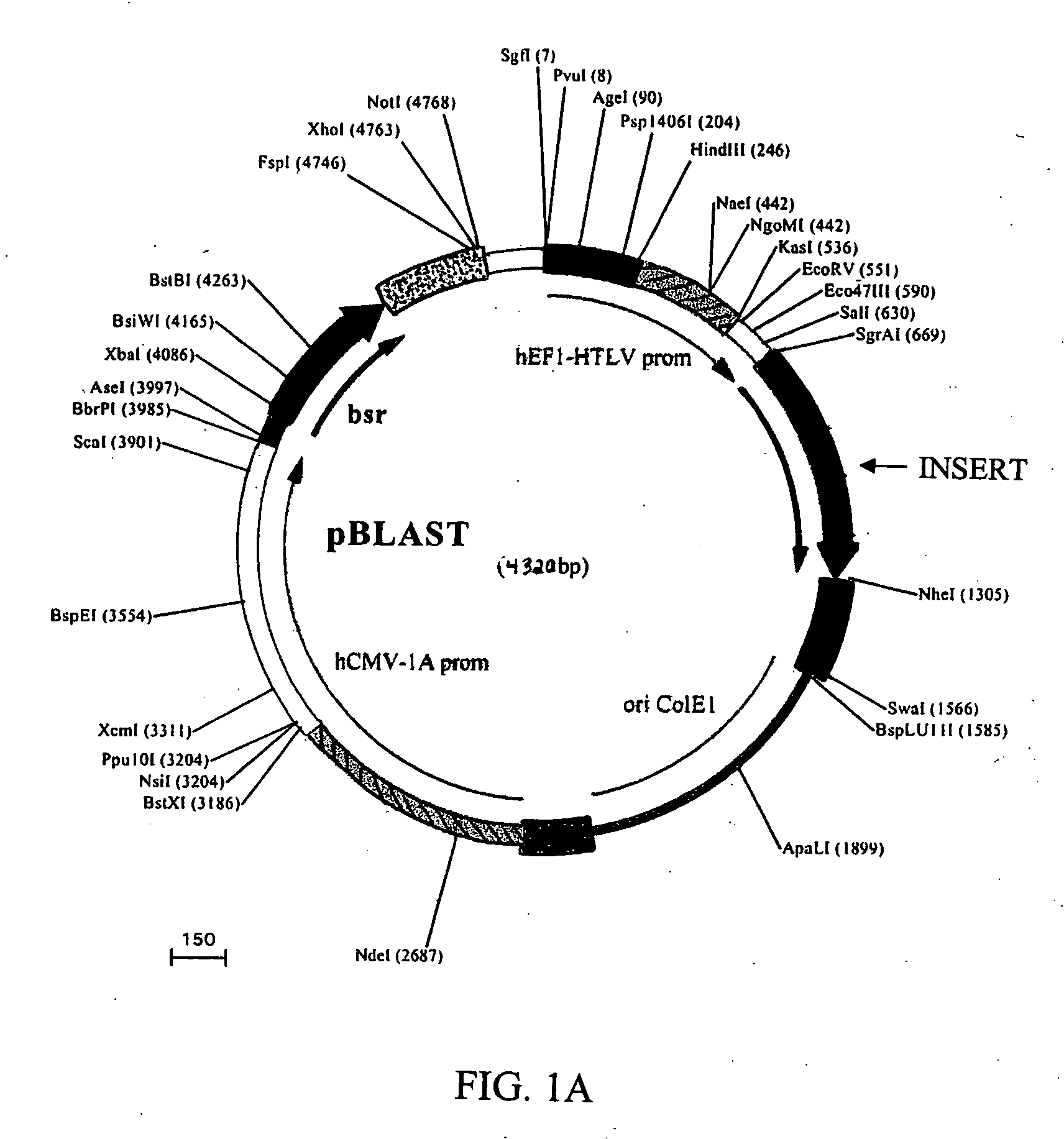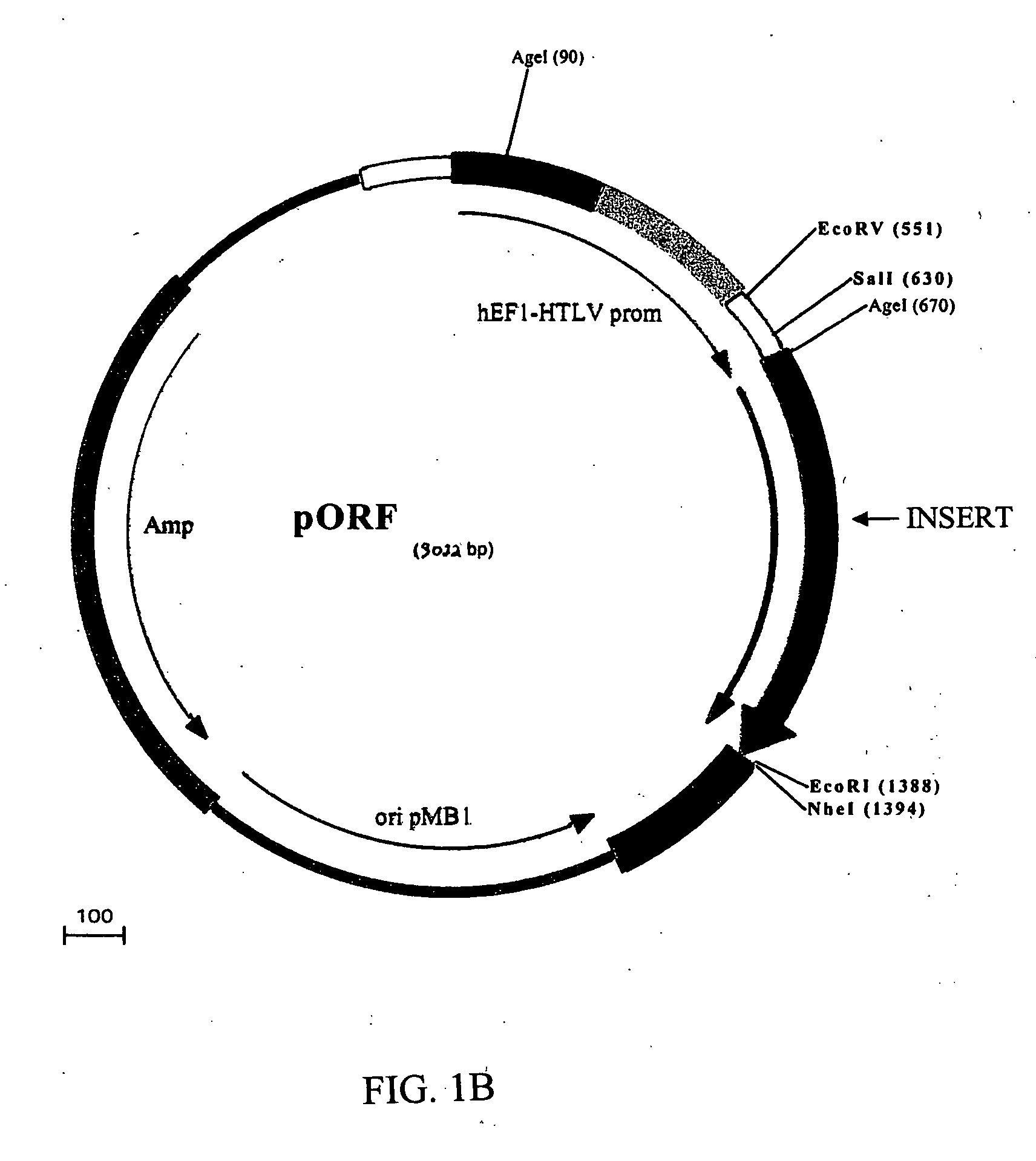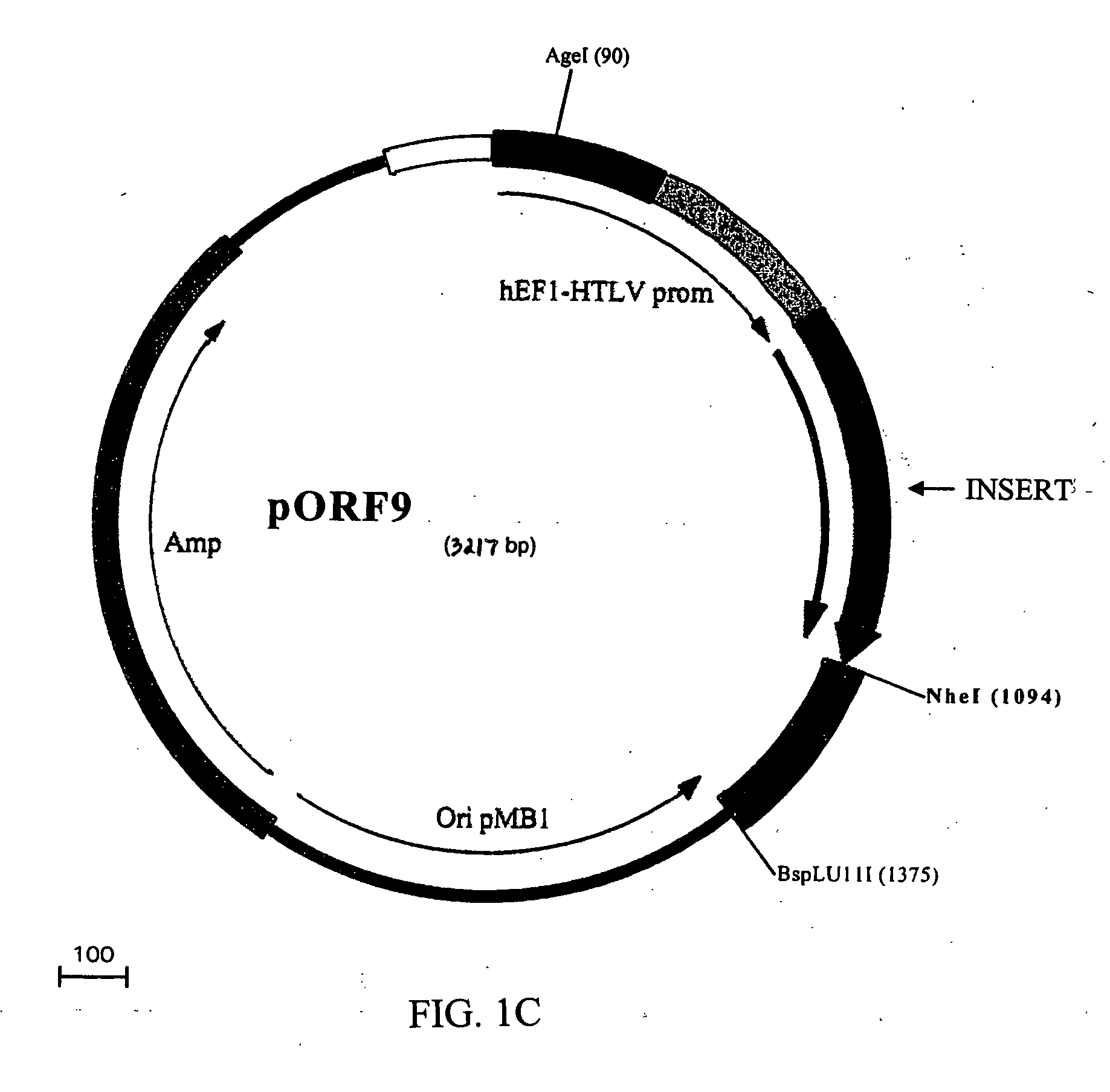Compositions and methods for combined therapy of disease
- Summary
- Abstract
- Description
- Claims
- Application Information
AI Technical Summary
Benefits of technology
Problems solved by technology
Method used
Image
Examples
example 1
Expression of PEDF and siRNA Targeted to VEGF in Human Cells
[0170] Plasmids expressing human PEDF and either hVEGF#5 or hVEGF#2 siRNA (which target human VEGF mRNA) or negative control siRNA were constructed as follows. Complementary oligonucleotides for expressing hVEGF#5 or hVEGF#2 siRNA were synthesized, annealed, and ligated into pSilencer 2.0-U6 siRNA Expression Vector (Ambion #7209). An oligonucleotide sequence for expressing a negative control hairpin siRNA was also synthesized, annealed and ligated into the pSilencer vector. The negative control siRNA consisted of a random target sequence. These oligonucleotides formed a hairpin structure when expressed. (See FIG. 3 for a schematic of the hVEGF#5 target sequence, the annealed DNA insert encoding hVEGF#5 hairpin siRNA, and the hVEGF#5 hairpin siRNA.).
[0171] The complementary oligonucleotides used to form the double-stranded insert encoding the hVEGF#5 siRNA hairpin were:
hVEGF#5-a(SEQ ID NO.1728)GATCCACCTCACCAAGGCCAGCACTTC...
example 2
Expression of Angiostatin and siRNA Targeted to HIF-1 Alpha in Human Cells
[0181] Two complementary oligonucleotides were synthesized, annealed, and ligated into pSilencer 2.0-U6 siRNA Expression Vector (Ambion #7209) as in Example 1 above, to express either a hairpin siRNA hHIF1α#11 or a negative control siRNA targeted to EGFP. The complementary oligonucleotides used to form the double-stranded DNA insert encoding the HIF1-alpha siRNA hairpin were:
hHIF1-alpha#11-a(SEQ ID NO.1732)GATCCAGTCGGACAGCCTCACCAATTCAAGAGATTGGTGAGGCTGTCCGACTTTTTTTGGAAAhHIF1-alpha#11-b(SEQ ID NO.1733)AGCTTTTCCAAAAAAAGTCGGACAGCCTCACCAATCTCTTGAATTGGTGAGGCTGTCCGACTG
[0182] The DNA fragments encoding the siRNA hairpin structures were excised from the pSilencer vector along with the pU6 promoter using PvuII, and inserted into the pCMS-EGFP vector (BD #6101-1) in place of the EGFP / PvuII fragment. The resulting plasmids were named pCMS-pU6-(siRNA). A human angiostatin cDNA fragment (the N-terminal fragment of human ...
example 3
Construction of Adeno-Associated Viral Vector Expressing RNAi Compounds
[0188] The nucleotide sequences encoding the anti-angiogenic compound (PEDF or angiostatin) and the siRNA will be excised from plasmids pCMS-PEDF-pU6-HVEGF#5; pCMS-PEDF-pU6-hVEGF#2 and pCMS-Angst-pU6-hHIF1-alpha#11, and inserted in between the inverted terminal repeats of a commercially available adeno-associated viral (AAV) plasmid. Recombinant AAV vector will be prepared by using the three-plasmid cotransfection system as described, for example, in Matsushita, T., 1998, Gene Ther. 5, 938-945, the entire disclosure of which is herein incorporated by reference. Briefly, the AAV vector will be cotransfected with two helper plasmids (Avigen, Alameda, Calif.) into HEK 293 cells by the CaPi precipitate method. One helper plasmid, pLadeno5, will contain the adenoviral VA, E2A, and E4 regions that mediate AAV vector replication. The other helper plasmid, pHLP19, will have the AAV rep and cap genes. Cell lysates will b...
PUM
| Property | Measurement | Unit |
|---|---|---|
| Time | aaaaa | aaaaa |
Abstract
Description
Claims
Application Information
 Login to View More
Login to View More - R&D
- Intellectual Property
- Life Sciences
- Materials
- Tech Scout
- Unparalleled Data Quality
- Higher Quality Content
- 60% Fewer Hallucinations
Browse by: Latest US Patents, China's latest patents, Technical Efficacy Thesaurus, Application Domain, Technology Topic, Popular Technical Reports.
© 2025 PatSnap. All rights reserved.Legal|Privacy policy|Modern Slavery Act Transparency Statement|Sitemap|About US| Contact US: help@patsnap.com



